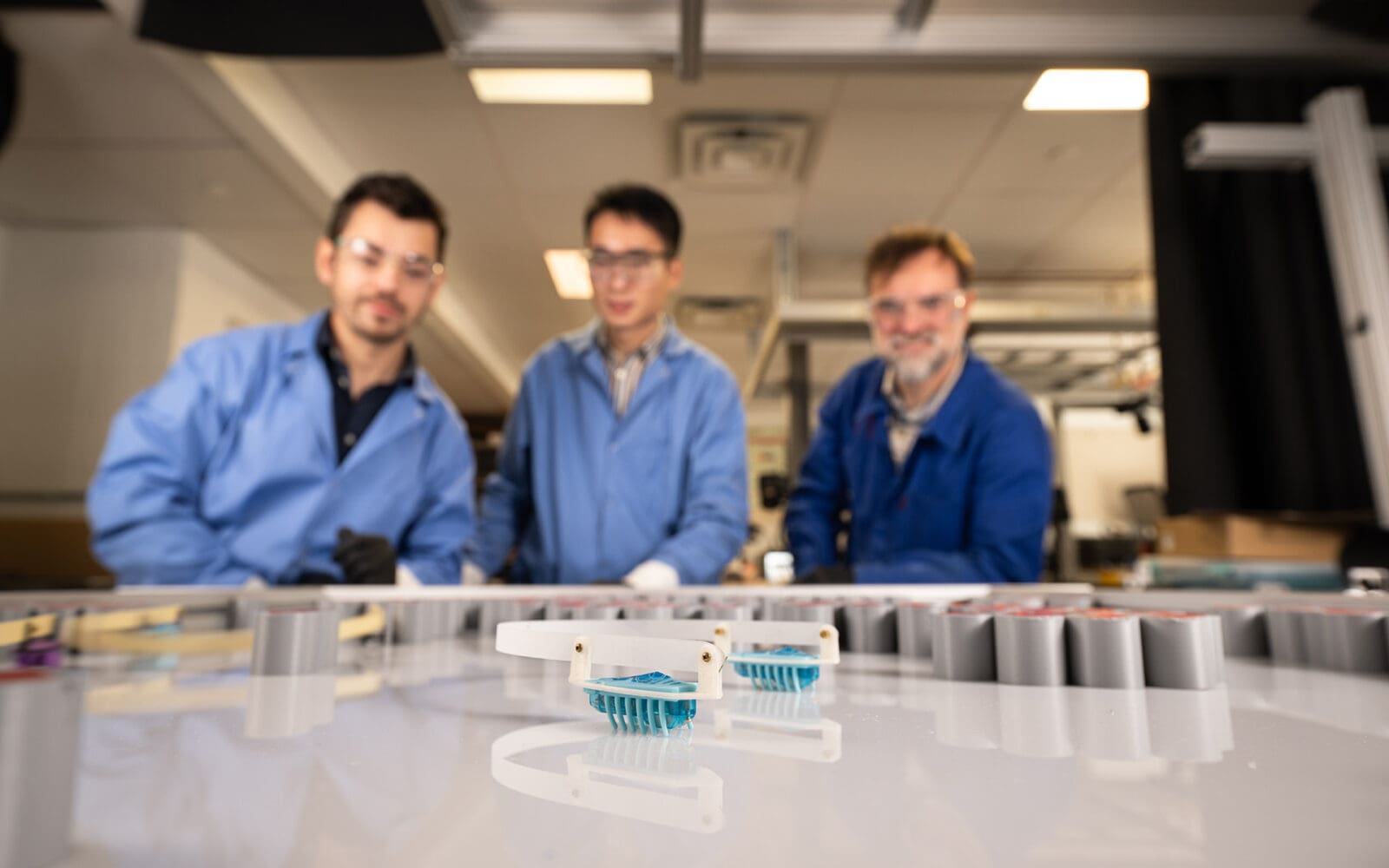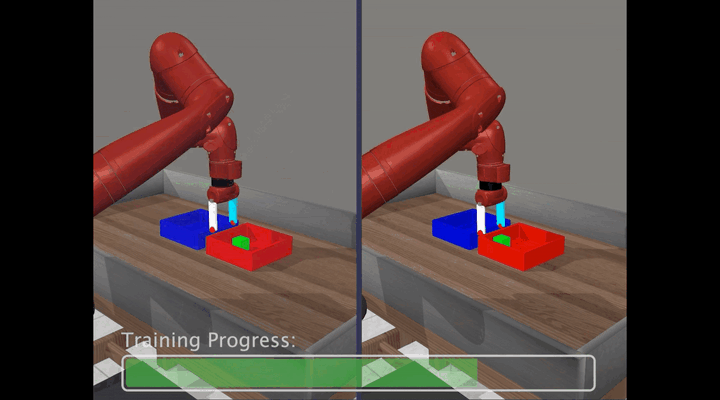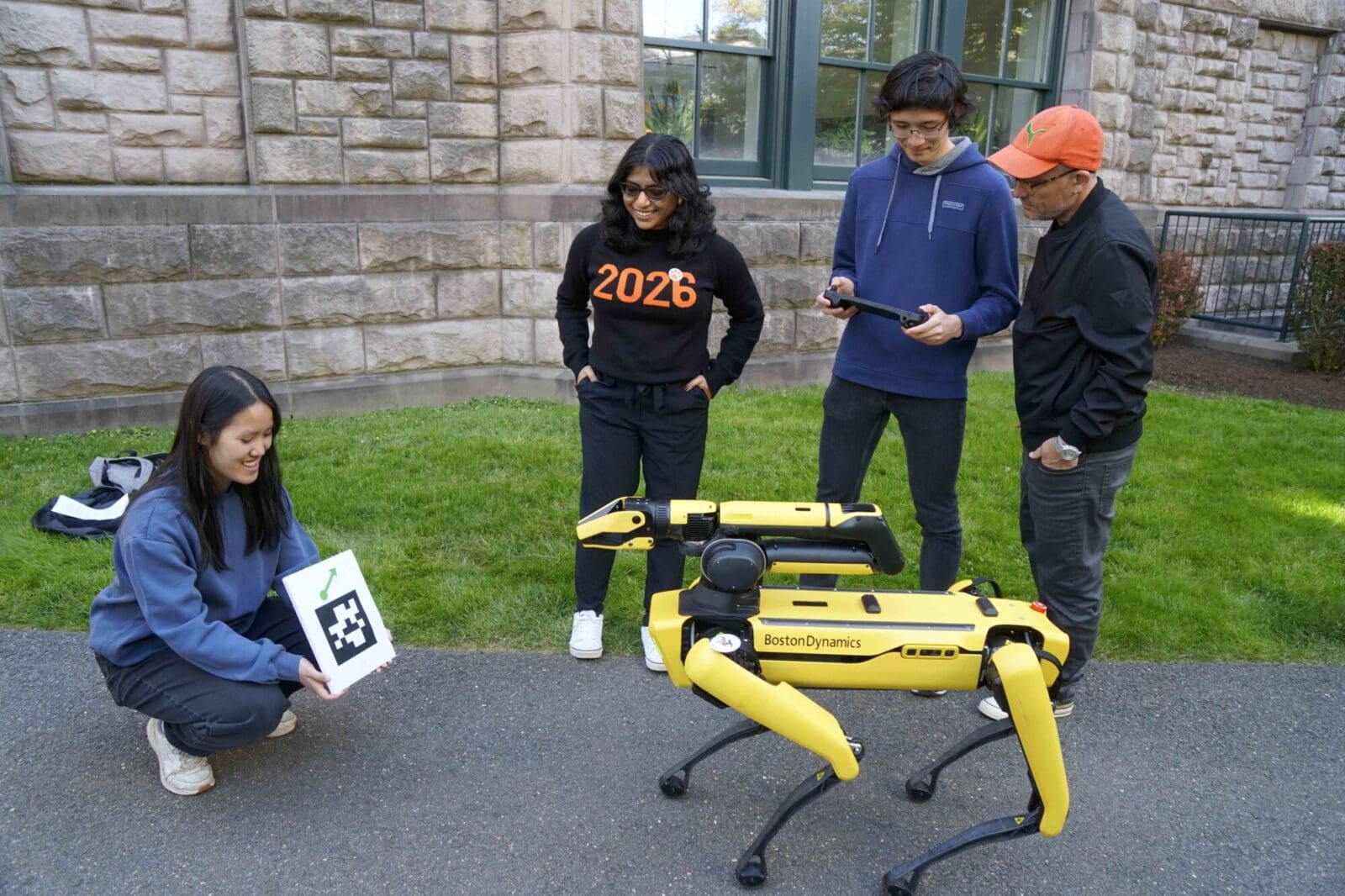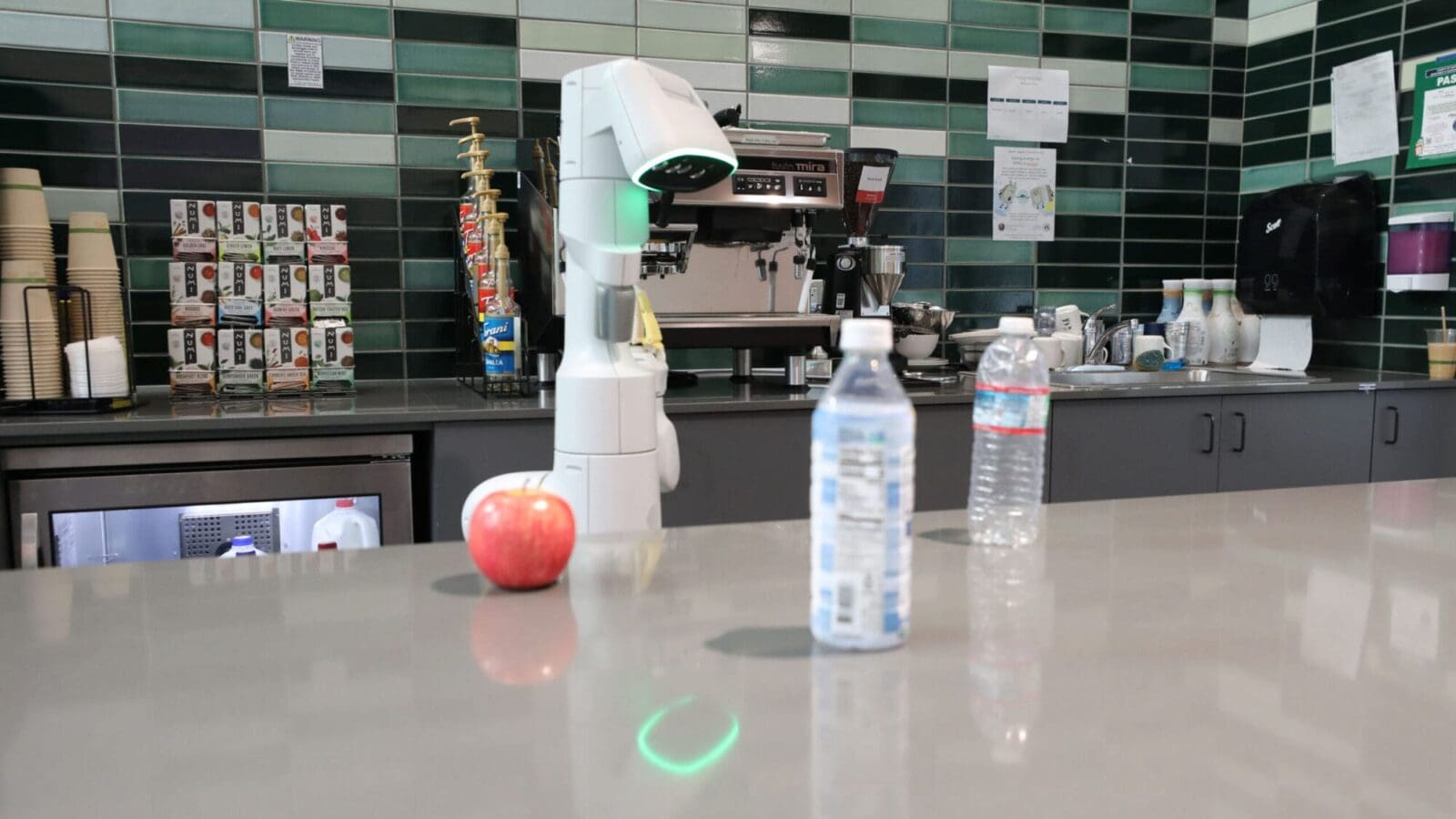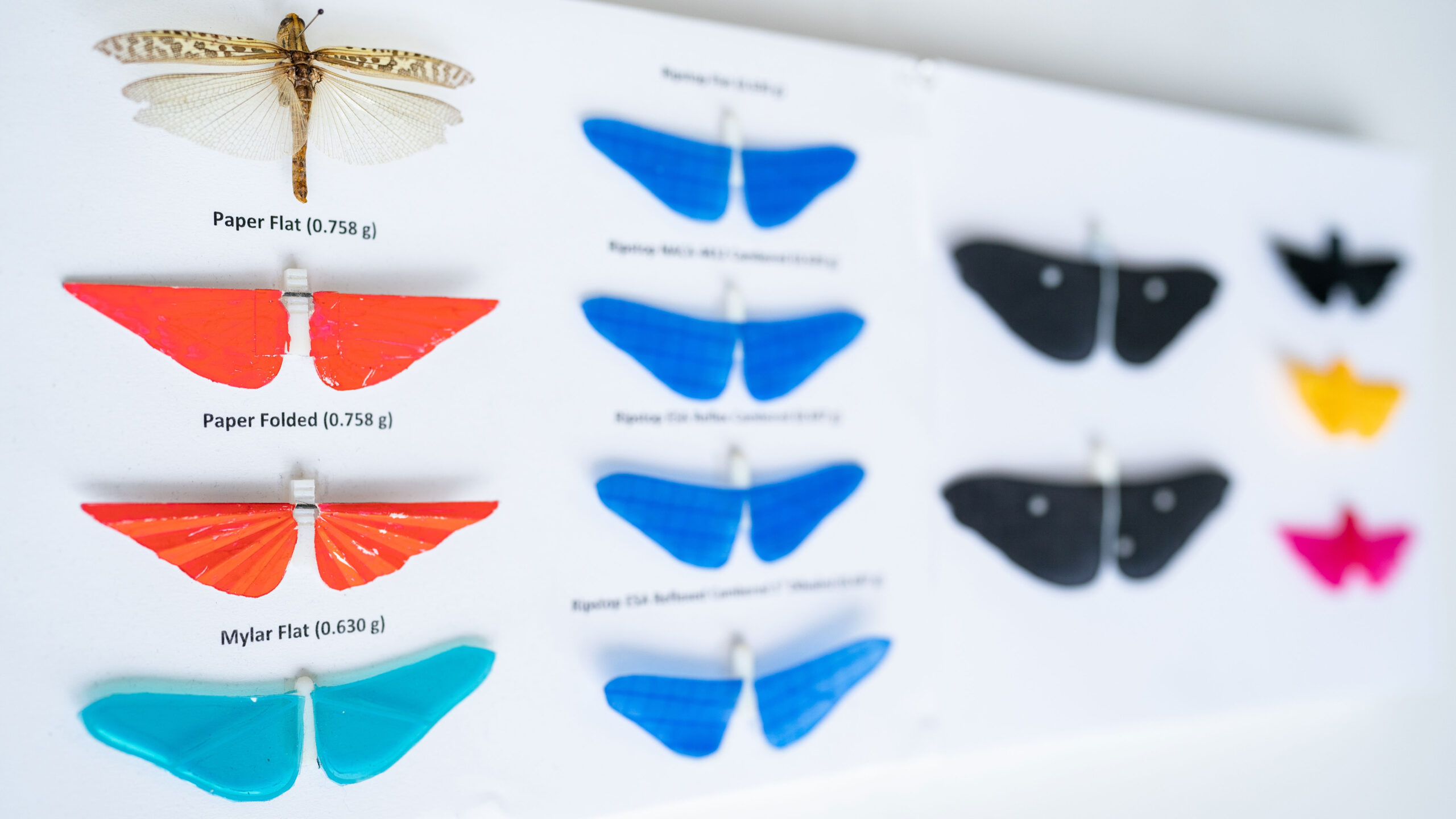Left alone, the toy robots will skitter mindlessly across a tabletop and amuse small children and cats. But when engineers at Princeton paired the small toys with a flexible tether, the bots developed remarkable abilities. They explored enclosed spaces, solved mazes with ease, and even rounded up loose objects into patterns.
“We wanted to take brainless agents and initiate complex behaviors,” said Pierre-Thomas Brun, an associate professor of chemical and biological engineering and the research team leader.
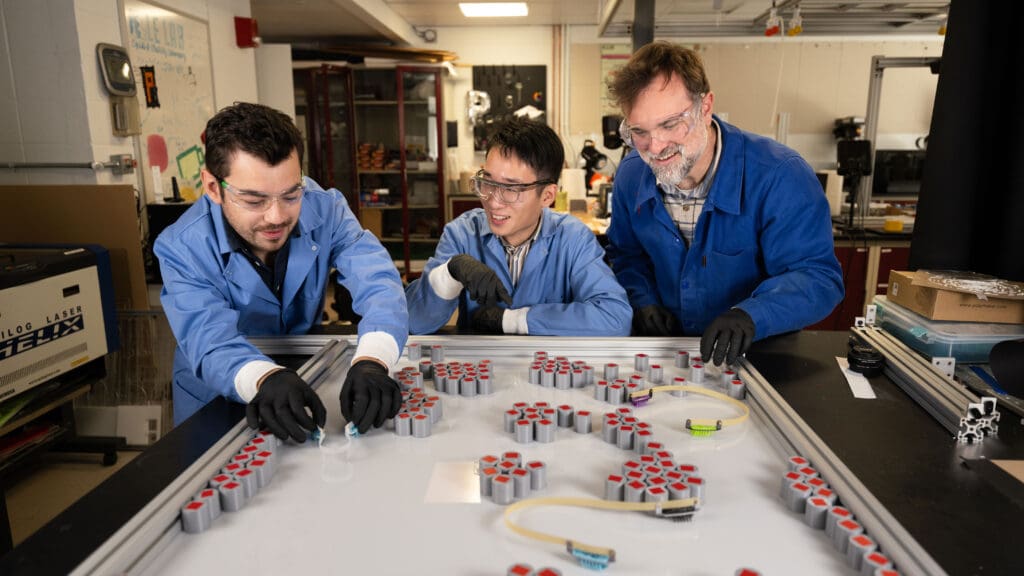
In an article published Oct. 29 in the Proceedings of the National Academy of Sciences, the researchers said that connecting the robots with a flexible polymer tether enabled the two-inch-long machines to exhibit morphological computation — a phenomenon in which physical characteristics, rather than digital calculation, can be harnessed to solve complex problems.
The findings have implications beyond interesting uses for robotic toys. Scientists are pursuing ways to control swarms of robots for everything from surveillance systems to space exploration. In many cases, researchers organize swarms by teaching each robot to respond to simple cues from its neighbors like a fish swimming in a school. Brun’s team wanted to explore whether it was possible to exert control over groups of robots that lack any computing power and that only respond to physical input.
The toy bots that his team used are a type of small robot called bristlebots. They feature tiny, flexible legs and a vibrating internal motor that drives their insectile motion. The bots lack any type of computer control and rely on mechanical friction to direct them. Widely sold as a toy, bristlebots have found a use in scientific experiments in which they stand in for gas particles and bacteria.
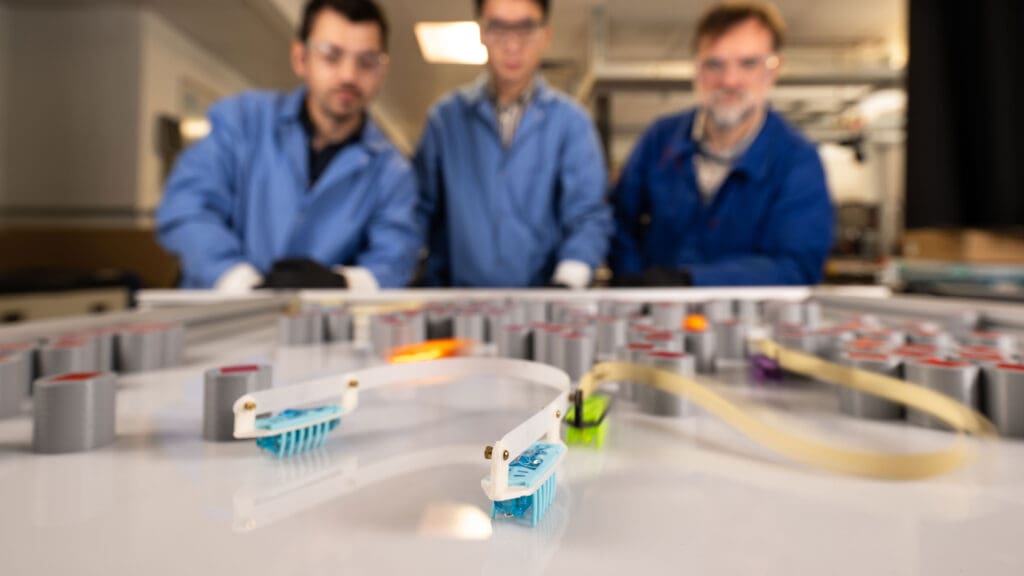
Brun’s team wanted to know if it would be possible to create complex behavior without using lights or other outside instructions. They planned to leverage mechanical intelligence in which physical systems solve problems in the same way a hand grasps a ball.
The key was a flexible tether, which the researchers created with a 3D printer. They experimented with rigid tethers and others of varying flexibility. Using cameras to track the bots, the researchers created mathematical models that predicted the paired bots’ behavior based on variables including the bots’ force and the tether’s length and flexibility.
In each setup, the researchers attached a tether to the front edge of each rectangular microbot. With the most rigid tether, basically a stiff polyester beam, the bots pushed against each other, and the pair barely moved. But as the researchers increased the polyester’s flexibility, the tethers began to buckle as the bots pushed. Eventually, the tethers buckled into a U-shaped curve, allowing the bots to push quickly forward toward the bend in the U — like two swimmers pushing each end of a noodle-shaped float. The tether connecting the bots controlled the pair’s direction by preventing either from skittering in a random direction. (This control decreases when the force delivered by the bots passes a threshold exceeding the tether’s resistance to buckling.) The researchers calculated the angle that allowed the bots to move forward in a controlled direction with the greatest speed.
Having learned to control the paired bots’ direction, the researchers moved on to obstacles. They found that when running into a wall, the U-shaped tether flattens and causes one of the paired bots to scoot along the wall. Eventually, the curve in the tether reappears but pointing in a different direction. This leads the pair of bots to navigate away from the wall. The behavior allows the bot pair to explore a confined space. It is also key to the pair’s ability to navigate mazes.
Besides this, the researchers examined the bots’ ability to squeeze through openings. They also developed ways to use the bots to gather loose objects on a tabletop into separate groups.
The project began as Richard B. Huang’s senior thesis project. Huang, who graduated in 2023 with a degree in chemical and biological engineering, said he started working with Brun investigating the behavior of single robots connected to an elastic beam. One day, he connected two robots with a tether and “turned on the recorder to see what would happen.”
“I let it go, and it moved around the walls of the experimental setup,” said Huang, now a doctoral student in chemical engineering at M.I.T. “I thought that was really interesting. And that’s when things started getting really exciting.”
Brun said the team plans to keep working on the tether system. He said they would like to explore other behaviors and arrangements with larger numbers of tethered bots. Another possibility is applying the work to drones moving in three dimensions.
The article, Emergent behaviors of buckling-driven elasto-active structures, was published Oct. 29 in the Proceedings of the National Academy of Science. Besides Brun and Huang, authors include Yuchen Xi, a graduate student in chemical and biological engineering at Princeton; Tom Marzin, a post-doctoral researcher at Princeton; and Trevor Jones, a former doctoral student in Brun’s lab who is now an assistant professor of mechanical engineering at Carnegie Mellon University. Support for the project was provided in part by the National Science Foundation.
